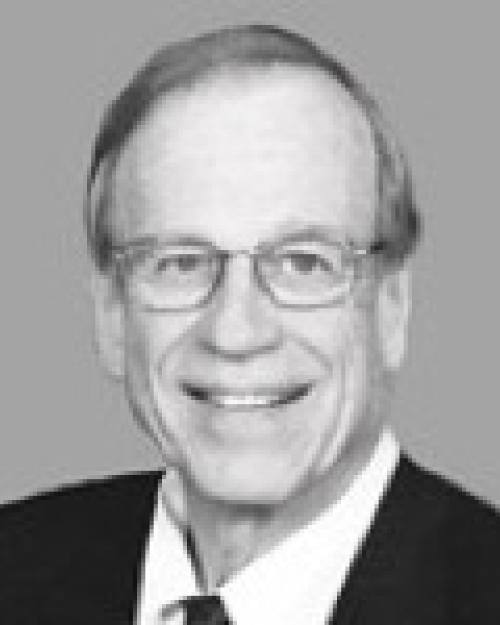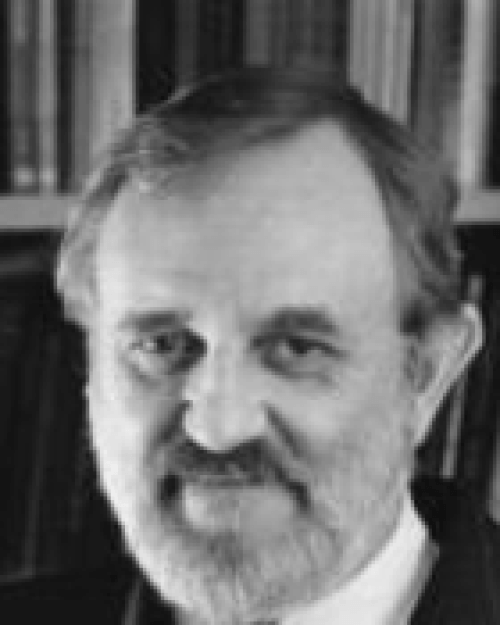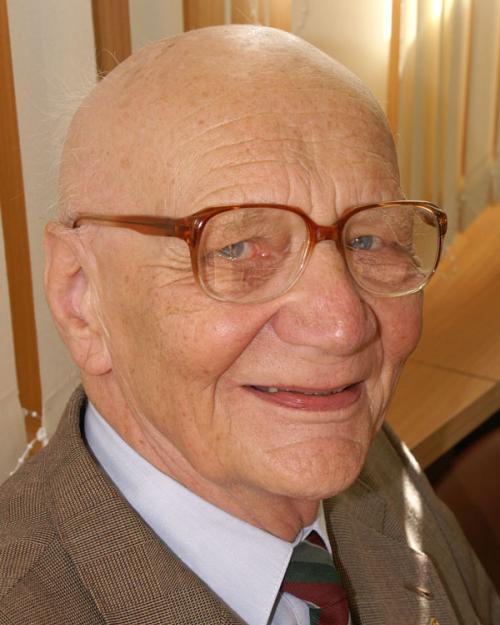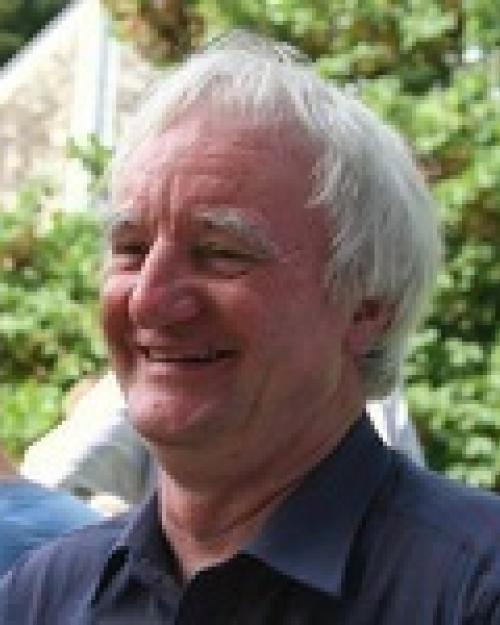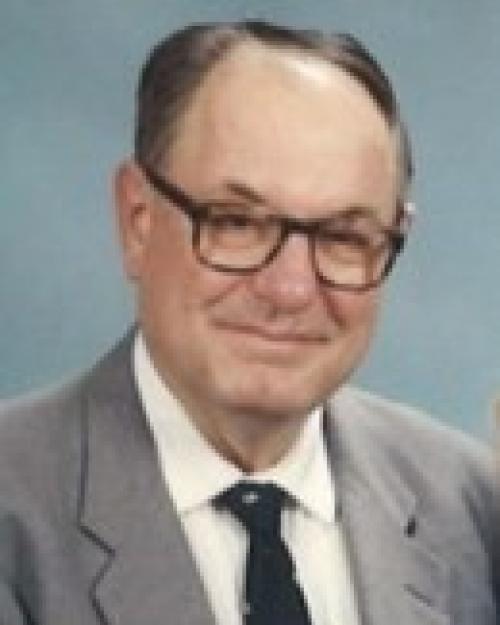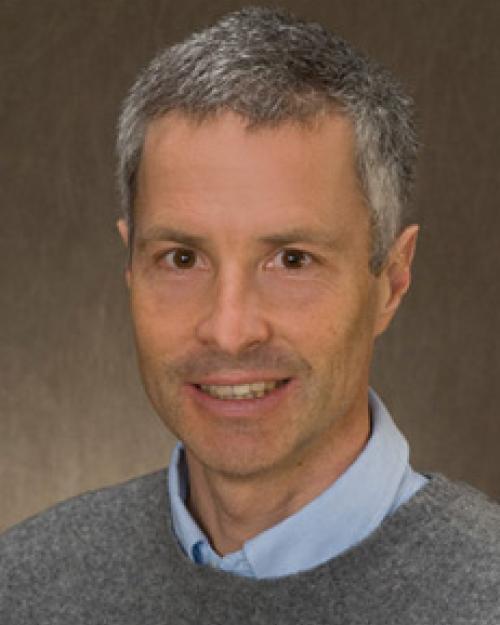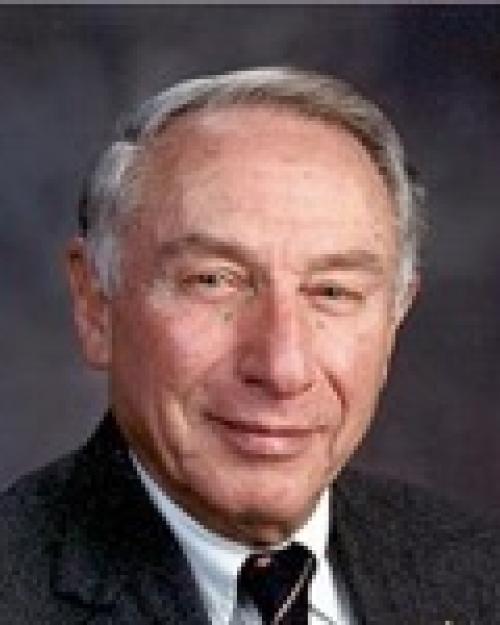-

Lewis T. Claiborne
-Born on September 17, 1935 in Holly Grove, Arkansas, USA, to Sylvia and Taylor Claiborne, passed away on November 23, 2016 at the age of 81 years, in Dallas, Texas, USA. Lewis is survived by his wife Margaret Mulvey Claiborne, his sons Taylor and Mark Claiborne, and his stepchildren Michael, Charlie, and Mignon Mulvey. Lewis received a Bachelor of Science degree in 1957 after only three years with a double major in Physics and Math from Baylor University. He continued his education at Brown University, having won the Marston Fellowship his senior year at Baylor. He completed his PhD in physics in 1961. After getting his degree he started a long career at Texas Instruments working there for twenty-seven years, beginning in 1962 and retiring from the company in 1989. While an employee at TI, Lewis served as Branch Manager, Research Manager, and finally the Director of Strategic Technology Resources for the Corporate Research and Development group. He was heavily involved in many projects, including a neural network program and helped with projects that led to a class of devices referred to as “nanoelectronics”. He established an effort for the evaluation of alternative techniques for A/D converters in 1981, a spatial light modulator program that was funded by DARPA for early versions of High Definition TV displays. Lewis then worked for Loral Vought Systems (formerly LTV Aerospace and Defense) starting in 1990 until 2001, at which point the company was part of Lockheed-Martin. At LTV, he served as Senior Consulting Engineer and Director of Research, and worked on several Sector and Corporate IR Integrated Program Teams. After retiring from LTV, he joined RF-SAW, where he worked until 2011. During his long career, he was also a member of the IEEE as well as the American Institute of Physics. He served as President of the IEEE Group on Sonics and Ultrasonics in 1976, Chairman of Program Committee for the 1972 IEEE Ultrasonics Symposium, and was a lecturer for the IEEE Outstanding Lecture Series in 1974-75. Lewis pursued many interests. He was an Instrument Rated Pilot (ASEL), active member in the church, and a long-time student of Japanese, German, and French. None of his interests were as strong as his love of music. He was an active member of the church choir (both at Spring Valley UMC and Northway Christian) and played clarinet and saxophone for years in the Town North Concert Band, and several jazz bands. He also enjoyed performing in singing groups and writing music. The memorial service will be held on Saturday, December 10, 2016 at 2pm at Northway Christian Church, followed by a reception. In lieu of flowers, memorial donations may be given to the Music Ministry at Northway Christian Church. The family of Lewis Taylor Claiborne wishes to thank the large community of friends and family from Northway Christian Church and Spring Valley United Methodist Church for their support. Published in Dallas Morning News on Dec. 4, 2016 Lew Claiborne was an early contributor to the development of Surface Acoustic Wave technology, and more recently, published on SAW RFID. He had a number of publications on programmable SAW filters, analog filtering and frequency control in the 1970’s. His publications included: L. T. Claiborne, “Currently Practical Acoustic Surface Wave Devices,” 1975 IEEE-MTT-S International Microwave Symposium, Palo Alton, CA, 1975, pp. 350-352. C. S. Hartmann and L. T. Claiborne, “Fundamental Limitations on Reading Range of Passive IC-Based RFID and SAW-Based RFID,” 2007 IEEE International Conference on RFID, Grapevine, TX, 2007, pp. 41-48. R. M. Hays, W. R. Shreve, D. T. Bell, L. T. Claiborne and C. S. Hartmann, “Surface wave transform adaptable processor system,” 1975 Ultrasonics Symposium, Los Angeles, CA, USA, 1975, pp. 363-370. C. R. Hewes, L. T. Claiborne, C. S. Hartmann and D. D. Buss, “Filtering with Analog CCDs and SWDs,” 30th Annual Symposium on Frequency Control, Atlantic City, NJ, USA, 1976, pp. 123-128. H. G. Vollers and L. T. Claiborne, “RF Oscillator Control Utilizing Surface Wave Delay Lines,” 28th Annual Symposium on Frequency Control, Atlantic City, NJ, USA, 1974, pp. 256-259.
E. J. Staples and L. T. Claiborne, “A Review of Device Technology for Programmable Surface-Wave Filters,” in IEEE Transactions on Sonics and Ultrasonics, vol. 20, no. 2, pp. 197-205, April 1973. W. S. Jones, C. S. Hartmann and L. T. Claiborne, “Evaluation of Digitally Coded Acoustic Surface-Wave Matched Filters,” in IEEE Transactions on Sonics and Ultrasonics, vol. 18, no. 1, pp. 21-27, Jan. 1971. L. T. Claiborne, “A Survey of Current SAW Device Capabilities,” 29th Annual Symposium on Frequency Control, Atlantic City, NJ, USA, 1975, pp. 135-138.
L. T. Claiborne, E. J. Staples and J. P. Mize, “Surface-wave interaction with the MOSFET,” 1970 International Electron Devices Meeting, 1970, pp. 84-86. doi: 10.1109/IEDM.1970.188275
M. G. Holland and L. T. Claiborne, “Practical surface acoustic wave devices,” in Proceedings of the IEEE, vol. 62, no. 5, pp. 582-611, May 1974. R. B. Hemphill, R. N. Claytor and L. T. Claiborne, “Ultrasonic delay line with variable round-trip loss,” in Proceedings of the IEEE, vol. 56, no. 2, pp. 218-219, Feb. 1968.
C. Hartmann, P. Hartmann, P. Brown, J. Bellamy, L. Claiborne and W. Bonner, “Anti-collision methods for global SAW RFID tag systems,” IEEE Ultrasonics Symposium, 2004, 2004, pp. 805-808 Vol.2. E. J. Staples and L. T. Claiborne, “A Review of Device Technology for Programmable Surface-Wave Filters,” in IEEE Transactions on Microwave Theory and Techniques, vol. 21, no. 4, pp. 279-287, Apr 1973.
L. T. Claiborne and D. D. Buss, “Analog Signal Processing Using Surface Wave and Charge Transfer Devices,” S-MTT International Microwave Symposium Digest, Atlanta, Georgia, USA, 1974, pp. 185-185.
L. T. Claiborne, G. S. Kino and E. Stern, “Scanning the issue,” in Proceedings of the IEEE, vol. 64, no. 5, pp. 579-580, May 1976.
L. Eric Cross
-L. Eric Cross passed away peacefully on the 29th of December. He was an Evan Pugh Professor Emeritus of Electrical Engineering, Penn State, a member of the US National Academy of Engineering, and a founding member of the Penn State Materials Research Laboratory. He was a world-leader in the field of ferroelectrics from a fundamental perspective, as an inventor of new characterization techniques, and in materials applications. He was beloved for his intelligence, vision, wit and humanity, as well as the charm with which he shared his fascination with ferroelectrics and his newest ideas. He was also an excellent mentor, and many of his students and postdoctoral researchers went on to scientific leadership position themselves. He came to the field of ferroelectricity in its infancy, and this to the objection of his advisor A.F. Stoner, “Who referred to it as a trivial lattice phenomenon!” Stoner was famed for his contributions to magnetism. World War II interrupted Cross’s undergraduate education at Leeds University (UK). During the war, he worked for the British Admiralty on a program using high frequency direction finding to track German U-boats, which ultimately allowed convoys to cross the Atlantic unharmed. Just two weeks after his transfer to that assignment, the boat that Cross previously served on was sunk in Atlantic, with no survivors. Ever after, Prof. Cross thought of himself as a lucky man. He was very proud of his long association with the Department of Defense and particularly the U.S. Navy, which supported much of his work in the field of sonar undersea transducers. He and his colleagues made many other societal contributions such as the piezoelectric transducer used in almost all modern medical ultrasound machines. During his career, Professor Cross was honored by many professional organizations. He was a Fellow of the Materials Research Society, the American Physical Society, the Optical Society of America, the American Ceramics Society, and IEEE. In 1983, he was elected to the National Academy of Engineering for his contributions to the development of electroceramic, dielectric, and piezoelectric materials. He was also the 2010 recipient of the Von Hippel award of the Materials Research Society, its highest honor. Cross joined Penn State as a senior research associate in 1961, rose through the ranks, and in 1985, was named Evan Pugh Professor of Electrical Engineering; an Evan Pugh Professorship is the highest distinction that the University can bestow on a faculty member. He is the author or coauthor of more than 850 refereed papers; he held 20 patents, and published a comprehensive text book, “Domains in Ferroic Crystals and Thin Films”. At Penn State he mentored > 50 graduate students from across the world – including Prof. Yao Xi: the first Chinese Ph.D. (1982) educated in the US following the cultural revolution. He will be sadly missed by all that knew him and worked with him. He shared his ideas freely with everyone that he met at scientific conferences, from graduate students to senior leaders in the field. He and his family, (wife Priscilla (Cilla) – a reluctant but gracious member of the ferroelectrics community by osmosis, and children Peter, Matthew, Daniel, Rachel, and Elizabeth) opened their home to generations of students and colleagues. Very nice memories of the scholar, passion and personality of Professor Cross can be appreciated at http://ethw.org/Oral-History:L._Eric_Cross.

Jan Fousek
-After a long illness, Professor Jan Fousek passed away on September 4 2016. He was one of the most prominent researchers in the field of ferroelectricity within the last 50 years and certainly the best-known Czech representative of this field. Born in Příbram, Czechoslovakia, he graduated from the Faculty of Mathematics and Physics of the Charles University, Prague, in 1953 and became a Ph.D student in the newly established Department of Ferroelectrics of the Institute of Physics, Czechoslovak Academy of Sciences (CAS), under the supervision of Prof. J. Beneš. In 1958 he defended his Ph.D thesis on microwave dielectric properties of barium titanate. Shortly after he became the head of the Department of Ferroelectrics at the same institution – a position he kept until 1990. During his early career he organized and chaired the 1st International Meeting on Ferroelectricity (IMF-1), which took place in Prague in 1966. At that time his principal research concerned domain walls in classical ferroelectrics. This work culminated in his most cited paper on permissible ferroelectric domain walls connecting two mechanically compatible domains. From 1967 to 1968, he and his wife Anna (also a physicist in ferroelectricity) visited Prof. L. Eric Cross at Penn State University. During that time, his research revealed dielectric behaviour of gadolinium molybdate which initiated intense research on improper ferroelectrics that held a predominant role within the Department during the seventies. Professor Fousek was also involved in optical and electro-optical studies of ferroelectrics, including improper and pseudo-proper ferroelectrics and the related phase transitions. By the beginning of eighties, the research was extended to consider incommensurate ferroelectrics and phase transitions of modulated phases. After the Soviet occupation in 1968, travelling abroad in Czechoslovakia became extremely difficult, but thanks to Professor Fousek’s established contacts he and other colleagues at the CAS were able to make some scientific visits abroad. One important visit during this time was Professor Fousek’s stay at the ETH Zurich (Swiss Federal Institute of Technology) in 1977. Peter Günter at the ETH Zurich later invited Professor Fousek to return for several additional scientific visits. A new series of meetings also emerged: “European Conference on Applications of Polar Dielectrics” (ECAPD). The first ECAPD was held together with the “International Symposium on Applications of Ferroelectrics” (ISAF) in Zurich in 1988, chaired by P. Günter. Because international contacts were difficult to maintain in the seventies, Professor Fousek established regular bi-lateral meetings with Polish scientists, represented by Professor Bozena Hilczer, Institute of Molecular Physics, Polish Academy of Sciences, Poznan. Meeting have been held alternately between the two countries since 1979. In the eighties, Professor Fousek continued research on optical and electro-optical properties of various incommensurate systems, low-temperature ferroelectrics and ferroelectric liquid crystals. In collaboration with P. Günter’s team he also studied the photo-induced and photo-refractive effects in ferroelectrics. In 1994 Jan Fousek was promoted to Professor in the Technical University of Liberec (TUL) and joined the Department of Physics at the Faculty of Education TUL. He supervised several Ph.D. students, revived and stimulated the research in the field of piezoelectricity and ferroelectricity and initiated several successful grant applications for establishing a modern experimental infrastructure at TUL. Younger colleagues benefited from his international contacts and were able to initiate research stays abroad. He continued regular visits to Penn State University, where he began writing a book on domains, together with A. Tagantsev from EPFL Lausanne and E. Cross. The book “Domains in Ferroic Crystals and Thin Films” provides an impressive monography of about 800 pages and was published in 2010. This volume was his last and most prominent scientific achievement. He continued his appointment with TUL until his retirement in 2005, helped with the organization of the 7-th European Conference on Applications of Ferroelectric (ECAPD-7) at TUL in 2004 and the Conference on Piezoelectricity for End Users III (PIEZO2007), Liberec 2007. Professor Fousek’s death was felt world-wide throughout the scientific community even after his six-year, illness-imposed absence from research. Several international conferences will honour his memory with special sessions. He will be remembered as a founder of the Czech research on ferroelectrics and as the best-known Czech representative in this field. Jan Petzelt Institute of Physics CAS, Prague, Czech Republic

André Clairon
André Clairon was a physicist at LNE-SYRTE, Observatoire de Paris, who made profound and continuing contributions to Time and Frequency Metrology. His work was recognized by several awards including the Rabi award in 1996 and the EFTF award in 2003. He had a global approach to research showing the same interest for experiment and theory, for fundamental science, technology and applications. Beyond T&F, he worked in several other fields such as atom interferometry, laser cooling of atoms, and laser development. His most prominent achievement is probably the pioneering realization of high accuracy atomic fountain frequency standards. International Atomic Time is now defined by such standards with relative uncertainties in the low 10-16. André Clairon was a wonderful colleague and collaborator, characterized by relentless curiosity, outstanding creativity and hard and rigorous work, while being always kind and modest. Let’s continue to be inspired by him!

Gernot Winkler
-“An Expert on, and a Definer of, Time”
Gernot Maria Rudolph Winkler ran the Time Service Department of the U. S. Naval Observatory (USNO) for thirty years, from 1966 to 1996. One of his first actions as Director was to replace a crystal clock with a cesium atomic clock as the USNO’s Master Clock, thus transitioning the Naval Observatory to the atomic clock era. From then on, under his leadership, the Time Service Department and the USNO grew and prospered. Under his tenure, his primary goals were to build a Master Clock system second to none, and to disseminate its time to the nation and the world. As an administrator, he secured funding for development, kick-start purchases, and operational use of a variety of innovations, such as 5071 cesiums, masers, mercury stored-ion clocks, and Two Way Satellite Time Transfer (TWSTT). This was done not only by incorporating the latest atomic clocks as they were developed, but also by increasing the number of clocks and applying sophisticated statistical techniques and computer technology to produce the time scale. He introduced time transfer by taking portable atomic clocks back and forth between locations, and later pioneered in applying GPS for that same purpose. He oversaw the improvement of the observational methods and determination of Earth orientation parameters by development of the world’s largest photographic zenith tube, a 26 inch PZT, and use of connected element interferometry, satellite laser ranging, and Very Long Baseline Interferometry observations and correlator for Earth rotation studies. This growth led to the establishment of the Earth Orientation Department at the USNO. One of his most politically difficult achievements was to convince the Air Force that the USNO should be the source of and monitor of time for the GPS system, and he also supplied UTC(USNO), the USNO Master clock’s realization of Coordinated Universal Time (UTC), as the source of time for the Loran and Omega Navigational Systems. In 1971, a collaboration between the USNO and Dr. Hafele of the University of Colorado provided a direct test of the relativistic time dilations by flying an atomic clock ensemble around the world in easterly and westerly directions. Later, a collaboration with Carroll Alley of the University of Maryland confirmed the isotropy of the speed of light by using the Washington Cathedral as a station to reflect microwaves between the USNO and NASA Goddard. His familiarity with relativity enabled him to make significant contributions to GPS’s treatment of the subject. Early in his career he co-founded the Precise Time and Time Interval (PTTI) Systems and Application Meetings. Starting from a small group of government agencies in 1969, it grew to be one of the core forums where practical timekeeping knowledge can be shared and discussed. The complete proceedings through 2012 can be found on-line on http://tycho.usno.navy.mil/ptti. Starting with 2013, PTTI meetings have become part of the Institute of Navigation’s program, and now known as ION-PTTI. Gernot M. R. Winkler Dr. Winkler was also a leader in international organizations dealing with time. He served on numerous national and international boards and commissions. He led the International Consultative Committee for Radio communications (CCIR) activity in the definition of UTC with leap seconds in 1972, which established atomic time as the worldwide time standard. He also led International Astronomical Union (IAU) activities concerning the specifications of the determinations of time scales. To those in Time Service, Gernot was an inspiring leader in every way. A strong and supportive manager, aided by his “von-Braun” accent, he always encouraged his employees to do their best. One of his favorite techniques was to praise someone behind his back about something very specific, because he knew the word would get back to him/her. He would follow his employees’ progress, and would welcome them into his small, densely-packed but well-organized office to talk to them about it. As a role model Winkler, was an intellectual giant who was happy to share. He published at least 88 papers, covering all aspects of timekeeping from frequency standards to time transfer to statistics. Many learned timekeeping from his technical review articles, and very much enjoyed learning philosophy from his almost-as-technical essays on not just the nature of time but of such concepts as deism, determinism, realism, subjectivism, monism, and positivism. Some of these are available in the form of essays at his website http://gmrwinkler.net. His life before coming to the USNO Born in 1922, Gernot had an interest in astronomy from age 12, when he came across a book by German spaceflight pioneer Hermann Oberth. He was also influenced by the science fiction writer Jules Verne. As a youth he was a radio amateur proficient in Morse code, which enabled him to avoid front line duty when he was drafted, much against his will, to the German army. He spent seven years in the army, two of them as a prisoner of war in American custody in southern Italy. Returning to Austria in 1947, he immediately resumed his studies at the University of Graz. There his interests evolved toward the mathematical sciences, including geophysics, physics, and astronomy. His PhD. in 1952 was on the mathematical modeling of coupled electromagnetic cavities used to support the microwave engineering industry. He was also associated with the Astronomy Department’s Solar Observatory, Kanzelhoehe. Dr. Winkler came to the United States in 1956 and began work in the microwave resonance branch of the U. S. Army Signal Corps, Monmouth, NJ, where they were supporting work on the first atomic clocks, the Atomichron, for the National Radio Company. These devices had a stability of one part in 1011, and became the first commercially-produced frequency standards. He earned six patents for his personal contributions to maser and oscillator stabilization. He also worked on ionospheric radio transmission, organizing and participating in several expeditions to the Greenland ice cap, as well as Antarctica. Awards and Honors In 1970 he was elected a Fellow of the IEEE (Institute of Electrical and Electronic Engineers). In 1984 he was awarded the Presidential Rank Award for Meritorious Executive in the Senor Executive Service. In 1988 at the International Frequency Control Symposium, he was awarded the I.I. Rabi Award. In 1994, at the 26th Annual Precise Time and Time Interval (PTTI) Applications and Planning Meeting, he received the Distinguished Service Award. The award citations can be found at http://tycho.usno.navy.mil/ptti/1994papers/Vol%2026_00.pdf and here. Family Winkler was preceded in death by his beloved wife Renate Anna Franziska Winkler, née Strafella (Nov. 3, 1923 – March 31, 2014). He eulogized her at http://gmrwinkler.net/Memoriam.html. He is survived by his children Vic and Beatrice (Trixi) Winkler Summers. More Information The full transcript of Steven Dick’s interview with Dr. Winkler in 1989, undertaken as part of the U. S. Naval Observatory history, Sky and Ocean Joined(Cambridge, 2003), is available in the Observatory Library in Washington, D.C. Winkler’s award citations can be found at http://tycho.usno.navy.mil/ptti/1994papers/Vol%2026_00.pdf and here.
Thrygve Meeker
-Thrygve Meeker was born in 1929 in Pottstown, PA to the late: Thrygve H. and Mabel (MacIntire) Meeker. He was married to his loving wife Joan (Honce), for 61 years. In 1951 he received his B.S. degree in chemistry from Ursinus College and his M.S. and Ph.D. in physics and chemistry, in 1954 and 1956, from the University of Delaware. In 1955 he joined Bell Labs where he addressed many of the important practical issues in communications related ultrasonic technology. As a Manager he helped develop the most complex monolithic crystal filter ever put into manufacture and led the development of the SAW timing recovery filter for the transatlantic fiber cable. Dr. Meeker was a leader in revising the IEEE piezoelectricity standards and received the IEEE Centennial Medal, in 1984 for his lifetime professional support of ultrasonics. In 1985, he received the IEEE UFFC Sawyer Award “”For his contributions to the theory and design of piezoelectric quartz devices.” He had served as president of the IEEE Ultrasonics, Ferroelectrics, and Frequency Control Society in 1965-1966. He had published some of his technical contributions. A selection of his articles and patents are listed below. He also authored “Theory and Properties of Piezoelectric Resonators and Waves,” Chapter 2 of Volume 2, in Precision Frequency Control, Edited by Eduard A. Gerber and Arthur Ballato, Academic Press, Inc., 1985. Dr. Meeker was a member of the First Presbyterian Church of Allentown, Alpha Tau Omega Fraternity, the American Chemical Society and the American Physical Society. He was predeceased by his parents and siblings Marjorie Middeler, J. Theodore Meeker, and Lawrence A. Meeker. Survivors: Wife Joan, Children: Linda Young and husband David, Diane Bartels, Thrygve K. Meeker and wife Barbara. Grandchildren: Samuel Young and Benjamin Young. Siblings Maurice Meeker and Marilyn Jones. A selection of Thryg Meeker’s publications and patents (from Google Scholar): Clock recovery and retiming scheme with saw filter phase trimming to achieve desired system phase adjustment PC Davis, DC Farley, SH Kravitz, TR Meeker… – US Patent…, 1987 – Google Patents
A clock recovery and data retiming circuit is disclosed which utilizes a SAW filter to form the recovered clock signal. The phase shift of the received data signal associated with various attenuation and distortion effects of the communication channel is compensated for and …The aging of bulk acoustic wave resonators, filters and oscillators JR Vig, TR Meeker – … Control, 1991., Proceedings of the 45th …, 1991 – ieeexplore.ieee.org The aging of quartz crystal resonators, filters, and oscillators is reviewed, including the topics of: the impacts of aging, typical aging characteristics, aging specifications, aging mechanisms, temperature dependence of aging, frequency and overtone dependence of … Small ripple surface acoustic wave filter with low insertion loss TR Meeker, WS Tsay – US Patent 4,577,169, 1986 – Google Patents A surface acoustic wave (SAW) filter is disclosed which exhibits both low insertion loss and small ripple in the passband, requirements which were considered mutually exclusive in the prior art. In accordance with the present invention, apodized group-type recessed …Thickness mode piezoelectric transducers
TR Meeker – Ultrasonics, 1972 – Elsevier Abstract This paper is a tutorial review of the theory of the simple thickness mode piezoelectric transducer. The usual differential equations and constitutive relations are used to obtain general impedance equations for the transducer with arbitrary boundary …Determination of Elastic Constants of Isotropic Materials at Megacycle Frequencies
TR Meeker, AH Meitzler – The Journal of the Acoustical Society of …, 1961 – scitation.aip.org
The frequency dependence of the phase and group velocities for longitudinal and flexural waves in a plate provides the basis for several convenient methods of determining elastic constants. In these methods two independent elastic constants are determined in strip- …
Method and apparatus for bonding transducer elements DR Herriott, JS Jones, TR Mecker… – US Patent 3,453,166, 1969 – Google Patents … 0C. United States Patent 3,453,166 METHOD AND APPARATUS FOR BONDING TRANSDUCER ELEMENTS Donald R. Herriott, Morris Township, Morris County, NJ, and Joseph S. Jones, Emmaus, and Thrygve R. Meeker and Kurt Reznicek, Allentown, Pa., assignors to Bell …Prion protein detection
D Maureen, W HANSON, T MEEKER – US Patent App. 11/675,950, 2007 – Google Patents
An example embodiment of the invention includes a method of performing an assay comprising the steps of (1) providing a multimode waveguide;(2) fixing one or more fluidic cells to the multimode waveguide, wherein each of the one or more fluidic cells including … Grating diffraction instrument for measuring ultrasonic phase velocity in liquids
EP Papadakis, TR Meeker – Review of Scientific Instruments, 1982 – scitation.aip.org An instrument is described for the measurement of ultrasonic phase velocity in liquids. The principle of measurement is gratingdiffraction which diverts an incoming ultrasonic wave generated by a transmitting transducer and aims it at a receiving transducer. The …
William Horton
-William H. Horton (S’40–M’43–SM’55– F’99) was born in Pittsburgh, Pennsylvania in 1921. He received the B.S.E.E. degree from MIT in 1943 and after serving in the U.S. Navy during WWII received the E.E. and Ph.D. degrees from Stanford University in 1948 and 1952, respectively. After completing his Ph.D. studies he became a member of the technical staff of General Electric in Schenectady, NY, and in 1965 cofounded Piezo Technology, Inc. in Orlando, Florida, where from 1969 until the sale of the company in 2004 he was president. He was chairman emeritus and technical consultant for the successor company, MtronPTI. PTI produced advanced VHF crystal filters; becoming one of the largest producers of monolithic crystal filters through the 1970s. In 1979, under Dr. Horton’s leadership, a group of engineers started a small company, named Sawtek, which was part-owned, housed and supported by PTI in its early few years. Sawtek grew rapidly with the advent of cellular radio requiring surface acoustic wave filters, went public, and later merged with Triquint, and is now part of Qorvo. While playing a major role in the startup of two companies, he also was technical leader, contributing authored or co-authored numerous presentations at the IEEE Frequency Control Symposium and in the UFFC transactions. He held several patents relating to the design and fabrication of quartz resonators and was the Principal Investigator on several SBIRs and other research programs. Bill had strength in both BAW device theory and measurements, and loved working on the bench. His last technical work spanning several years was on understanding the amplitude-frequency effect in quartz resonators, culminating in his 2006 IEEE UFFC-T publication. Bill was also a mentor to the many engineers who worked with him both inside and outside his company, providing guidance and advise, and challenging new concepts and ideas. Beyond professional accomplishments, Dr. Horton led in establishing the PTI profit sharing program that shared success with its employees. Bill served on several IEEE committees and, for many years, participated in the planning of the IEEE International Frequency Control Symposium (IFCS). Bill also supported and worked with faculty and students at the University of Central Florida. Dr. Horton continued to work part-time at MtronPTI into his 90s. Dr. Horton was a Life Fellow member of IEEE, a member of Sigma Xi and Sigma Tau, an Honorary member of EKN and a Professional Engineer (Retired). He received the Region 3, IEEE Outstanding Engineer Award in 1988, and the IEEE International Frequency Control C.B. Sawyer Award in 1990. He is survived by five children. In recognition of his contribution to PTI, the frequency control industry and his love of research, MtronPTI established the Horton Endowment Scholarship at the University of Central Florida (UCF). Donations can be made at: https://www.ucffoundation.org/give-to-a-ucf-college For “Designation”, select “Other” and paste: CECS000307 – Horton Endowed Scholarship Dr. Horton was a frequent, and generous contributor to the field of frequency control. His publications included: A note on VHF acoustically coupled bandpass crystal filters R. C. Smythe; W. H. Horton; R. B. Angove
Proceedings of the IEEE Year: 1967, Volume: 55, Issue: 3 Pages: 422 – 423, DOI: 10.1109/PROC.1967.5512 Experimental Investigations of Intermodulation in Monolithic Crystal Filters W. H. Horton; R. C. Smythe
27th Annual Symposium on Frequency Control. 1973 Year: 1973 Pages: 243 – 245, DOI: 10.1109/FREQ.1973.199963 Future of the Quartz Industry – World Views W. H. Horton Thirty Fifth Annual Frequency Control Symposium. 1981
Year: 1981 Pages: 592 – 592, DOI: 10.1109/FREQ.1981.200529 Evaluation of Crystal Measurement Systems R. C. Smythe; W. H. Horton 37th Annual Symposium on Frequency Control. 1983 Year: 1983 Pages: 290 – 296, DOI: 10.1109/FREQ.1983.200682 Quartz Crystal Unwanted Mode Response and Measurement
W. H. Horton IEEE Transactions on Sonics and Ultrasonics Year: 1966, Volume: 13, Issue: 4
Pages: 111 – 115, DOI: 10.1109/T-SU.1966.29393
Comparison of Methods for Measurement of Quartz Crystal Resonators with Load Capacitance W. H. Horton; T. S. Payne; R. C. Smythe; D. A. Symonds Thirty Fifth Annual Frequency Control Symposium. 1981
Year: 1981 Pages: 271 – 279, DOI: 10.1109/FREQ.1981.200484 The work of Mortley and the energy-trapping theory for thickness-shear piezoelectric vibrators W. H. Horton; R. C. Smythe Proceedings of the IEEE Year: 1967, Volume: 55, Issue: 2 Pages: 222 – 222, DOI: 10.1109/PROC.1967.5448 The Hybrid-Coil Bridge Method of Measuring Unwanted Modes of Vibration in Quartz Crystals W. H. Horton; R. C. Smythe 17th Annual Symposium on Frequency Control. 1963 Year: 1963 Pages: 316 – 324, DOI: 10.1109/FREQ.1963.201269 A new frequency for piezoelectric resonator measurement
W. H. Horton; R. C. Smythe Proceedings of the IEEE Year: 1983, Volume: 71, Issue: 2
Pages: 280 – 282, DOI: 10.1109/PROC.1983.12574
Portable detection system for illicit materials based on SAW resonators G. Watson; W. Horton; E. Staples Ultrasonics Symposium, 1992. Proceedings., IEEE 1992 Year: 1992 Pages: 269 – 273 vol.1, DOI: 10.1109/ULTSYM.1992.275997 Comparison of Crystal Measurement Equipment W. H. Horton; S. B. Boor Frequency Control, 1965 19th Annual Symposium on
Year: 1965 Pages: 436 – 468, DOI: 10.1109/FREQ.1965.199589 Dynamic measurement of amplitude-frequency effect of VHF resonators W. H. Horton; G. E. Hague
IEEE Transactions on Ultrasonics, Ferroelectrics, and Frequency Control Year: 2006, Volume: 53, Issue: 1 Pages: 159 – 166, DOI: 10.1109/TUFFC.2006.1588401 Adjustment of resonator G-sensitivity by circuit means R. C. Smythe; W. H. Horton Frequency Control, 1990., Proceedings of the 44th Annual Symposium on Year: 1990 Pages: 437 – 443, DOI: 10.1109/FREQ.1990.177529 Theory of Thickness-Shear Vibrators, with Extensions and Applications to VHF Acoustically-Coupled-Resonator Filters W. H. Horton; R. C. Smythe
21st Annual Symposium on Frequency Control. 1967 Year: 1967 Pages: 160 – 178, DOI: 10.1109/FREQ.1967.199664 On the trapped-wave criterion for AT-cut quartz resonators with coated electrodes W. H. Horton; R. C. Smythe
Proceedings of the IEEE Year: 1967, Volume: 55, Issue: 4 Pages: 598 – 599, DOI: 10.1109/PROC.1967.5619 Amplitude-frequency effects in VHF quartz resonators W. H. Horton; G. E. Hague Proceedings of the 2005 IEEE International Frequency Control Symposium and Exposition, 2005. Year: 2005 Page: 10 pp., DOI: 10.1109/FREQ.2005.1574037
Franz Seifert
-Our colleague and friend Prof. Dr. Franz Seifert (IEEE SM ’86), SAW pioneer of the 1970s, 1980s and 1990s, passed away at his home in Vienna, Austria, on February 7, 2016, unexpectedly. Franz was born in 1933 in Vienna. He graduated from the Technical University Vienna in 1961 with a Dipl.Ing. degree, and finished his studies with the PhD in 1965. At TU Vienna, he joined the Institute of High Frequency Technology as a research assistant; two years later he moved to the Institute for Physical Electronics, where he received a call as Professor for Applied Electronics in 1974. His interest in the measurement of semiconductor properties of InSb, which he focused on in his early years as a professor, brought him into contact with acoustic charge transport and acoustic wave technology. Together with his team of scientists and students, he worked and significantly contributed to virtually all areas of the application of acoustic wave devices. Signal processing was the key theme in all of his research and most of his inventions. During more than 30 years he was active in the development of pulse compression filters, advanced spread spectrum techniques and analogue and digital convolvers. With his team, he performed contract research for government agencies, e.g. the Austrian Armed Forces, as well as the defense and aerospace industries. Of extremely high impact was Franz Seifert’s work on surface acoustic wave (SAW-) filter design techniques, manufacturing technology, and – last but not least – device simulation. Through his work and the contributions of his team members and PhD students, among them Alireza Baghai-Wadji, and Clemens Ruppel, the early activities of Siemens AG, Munich, later EPCOS AG, received decisive inputs and scientific guidance. Also in cooperation with Siemens, he did pioneering work in the field of wireless sensing, of course applying SAW-based sensor elements. Another focus area of research was medical electronics, especially concerning signal processing with respect to the measurement of the blood flux in arteries during the research on arteriosclerosis. To all areas of his research he contributed innovations. Overall, more than 35 patents carry his name as inventor or co-inventor. Franz was also remarkable with respect to his dedication to teaching. It was his true ambition to educate students and, e.g., to explain to undergraduates the “world of electronics” in an understandable way. He had the rare gift to analyze complex systems and unveil the root cause chain. We knew Franz as a very friendly and modest man, though willing to fight for his beliefs when necessary. It was always much more important for him to see the results of his effort being used, working well and having impact, than to stand in the spotlight himself. As a private persons, his greatest passion was to spend time with his family and his many friends, to work in his home and garden, to which normally no craftsman had access (“An engineer can fix this on his own!”), to listen to music and study Austrian history. He was buried in presence of numerous colleagues from academia and industry, most of them former students of Franz) in his family’s tomb on a sunny winter day.

Geoff Lockwood
-Geoff Lockwood passed away on Tuesday afternoon, January 20th, 2015. He was born in 1961 in Toronto. Throughout his early life he was fascinated by flight, and planned to be an aeronautical engineer. But Medical imaging turned out to be his calling – and after obtaining an Electrical Engineering degree from the U of T he went on to become one of the early pioneers of high frequency ultrasound, obtaining a PhD from the U of T in Medical Biophysics. Geoff was a gifted researcher. He left Canada to become a scientist at the prestigious Cleveland Clinic in the U.S., while also holding adjunct positions at Ohio State and Case Western Reserve Universities. While in the US his expertise attracted a number of high-profile NIH (US National Institute of Health) and Department of Defense grants. But his real passion was teaching – he wanted to work with students, and in 1999 this passion brought him, along with Anne and their two boys, back to Canada and Queen’s Engineering Physics. Geoff continued his work in high-frequency medical ultrasound imaging, and his research group worked on everything from designing miniature integrated circuit beamformers to real-time 3D ultrasound imaging. Over only 15 years, Geoff won over $3.3M in research funding from US and Canada granting agencies and developed 5 patents. His early work at the U of T formed the basis for VisualSonics – an ultrasound micro-imaging technology company founded by Dr. Stuart Foster (Sunnybrook Health Sciences Centre). Upon the recent sale (2012) of this company, Dr. Foster recognised Geoff’s significant accomplishment by establishing a $900K endowed scholarship in his name at the University of Toronto. But despite his enormous research talent and insight, Geoff’s heart was primarily with the students. His teaching methods were simple – a piece of chalk and a blackboard – but his lectures were delivered with an intelligence and care that deliberately left no student behind. He loved teaching so much that he asked to return to the classroom even after his first devastating round of brain surgery/radiation/chemotherapy. He spent hours re-learning his own ENPH239 lecture notes, and even typed them up for the students in case he had to miss a class. It is no surprise that year after year after year he won the teaching award in Engineering Physics. Above all, Geoff had an amazing, and rare, strength of spirit. His illness never defeated this amazing spirit. Every time the cancer, or the treatments, knocked him down and closed a door, he would simply open it again, or try a new door. He re-learned how to walk; re-learned how to talk. He re-learned his lecture material. When he couldn’t snowboard anymore he re-learned how to ski. He re-learned how to rock climb, even though his feet were numb and he couldn’t feel the footholds.

Floyd Dunn
-IEEE Edison Medal recipient and Life Fellow, Floyd Dunn, a groundbreaking pioneer in the science of ultrasound and bioacoustics, died on January 24, 2015. A veteran of the WWII Battle of the Ardennes, he was 90 years old. His death comes 30 days after that of his wife of 64 years, Elsa Dunn. Floyd attended the University of Illinois at Urbana-Champaign in the Department of Electrical Engineering, arriving in 1946 as an undergraduate student on the GI Bill. He earned three degrees, including his PhD in 1956. For more than twenty years, he directed the Bioacoustics Research Laboratory that had been founded by his research advisor William J. Fry and his brother Frances J. Fry, in 1946. Floyd Chaired the Bioengineering Faculty from 1978 to 1982. He retired and accepted emeritus status in 1995. In 1996 he and Elsa moved to Tucson, Arizona where Floyd remained scientifically active. Floyd, in 1954, was a founding member of the IRE Professional Group on Ultrasonics Engineering (now the IEEE Transactions on Ultrasonics, Ferroelectrics, and Frequency Control) three-person Editorial Board (then called the Paper Review Board); the other two board members were Bill and Frank Fry. Floyd had an extraordinarily creative science and engineering career at the interface between diagnostic and therapeutic ultrasound and living systems, and his influential research significantly promoted diagnostic and therapeutic ultrasound. He was the first to quantify in vivo the temperature-dependent ultrasonic absorption coefficient, a pivotal finding that significantly influenced therapeutic ultrasound; the first to demonstrate that ultrasonic images resulted from structural protein constituents, a seminal finding that initiated worldwide research activities in ultrasonic tissue characterization; and the first to recognize the need to quantify the nonlinearity parameter in biological materials. His innovative experimental preparations showed that physical interactions of ultrasound in living systems occur under conditions where thermal and cavitation events were innocuous, thus demonstrating the control achievable in producing reversible and irreversible changes in living systems. Floyd’s revolutionary work contributed to the safety and efficacy of diagnostic and therapeutic ultrasound. This included determining ultrasonic thresholds for irreversible structural changes. These thresholds became the de facto worldwide standards from which government, academic and research bodies established diagnostic ultrasound safety criteria. Floyd was widely recognized for his professional achievements. He was a member of both the National Academy of Sciences and the National Academy of Engineering. He was the past President of the Acoustical Society of America. He held fellowships in seven professional associations and was a member of eight editorial boards. He was a recipient of the ASA Gold and Silver Medals as well as the AIUM William J. Fry Memorial Lecture Award in 1984 and the AIUM Joseph P. Holmes Basic Science Pioneer Award in 1990. He received the University of Illinois Senior Scholar and Distinguished Alumnus Awards, the Medal of Special Merit of the Acoustical Society of Japan, and was an honorary member of the Japan Society for Ultrasound in Medicine. For sustained leadership in biomedical ultrasound, Floyd Dunn stood alone. Devoting his career efforts to the subject for nearly six decades, he maintained a steady flow of productive research and built one of the largest organizations devoted to the field. Through leadership and participation in numerous organizations behind the scenes, he encouraged the development of the field at home and abroad. He was involved in the first major blossoming of biomedical ultrasound in the 1950s and 1960s including a few years when he nearly single-handedly kept the field alive. Today biomedical ultrasound is a major industry, and basic research in the field receives a significant fraction of the NIH budget. No single scientist is more responsible for this success than Floyd Dunn. Floyd Dunn is survived by his daughter, Andi Dunn, his son, Roo Dunn, and five grandchildren.
Pagination
